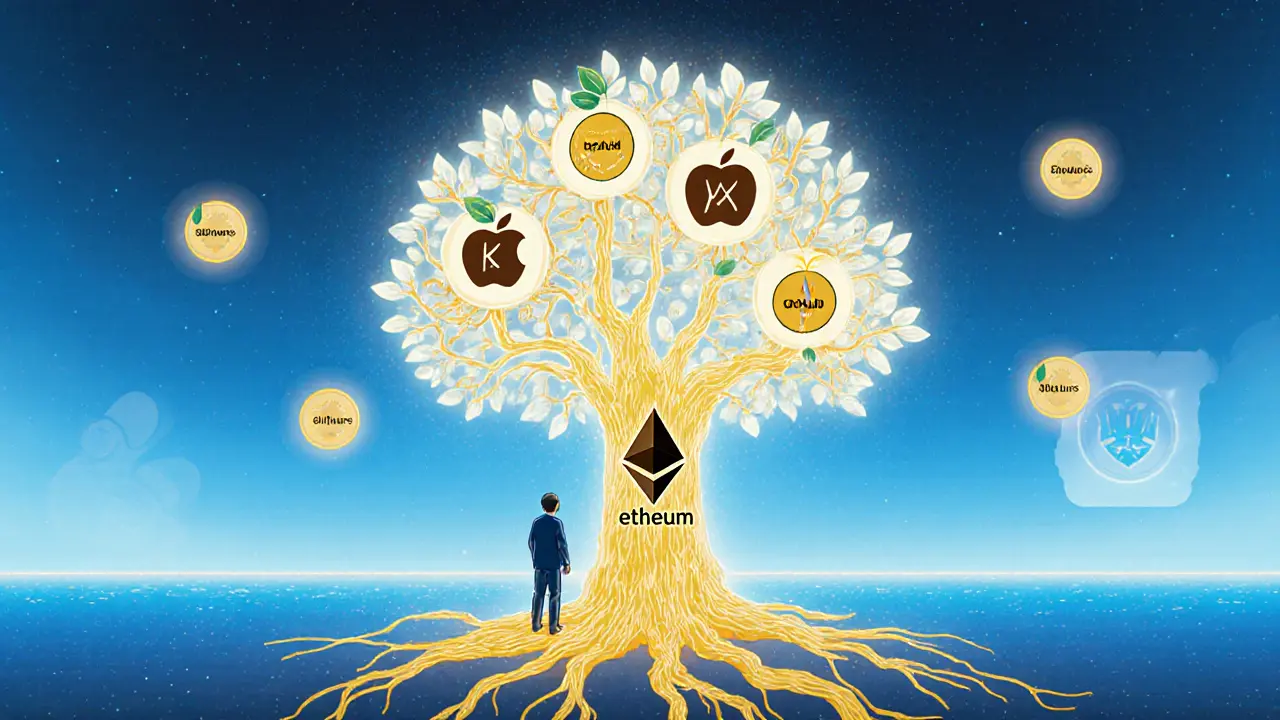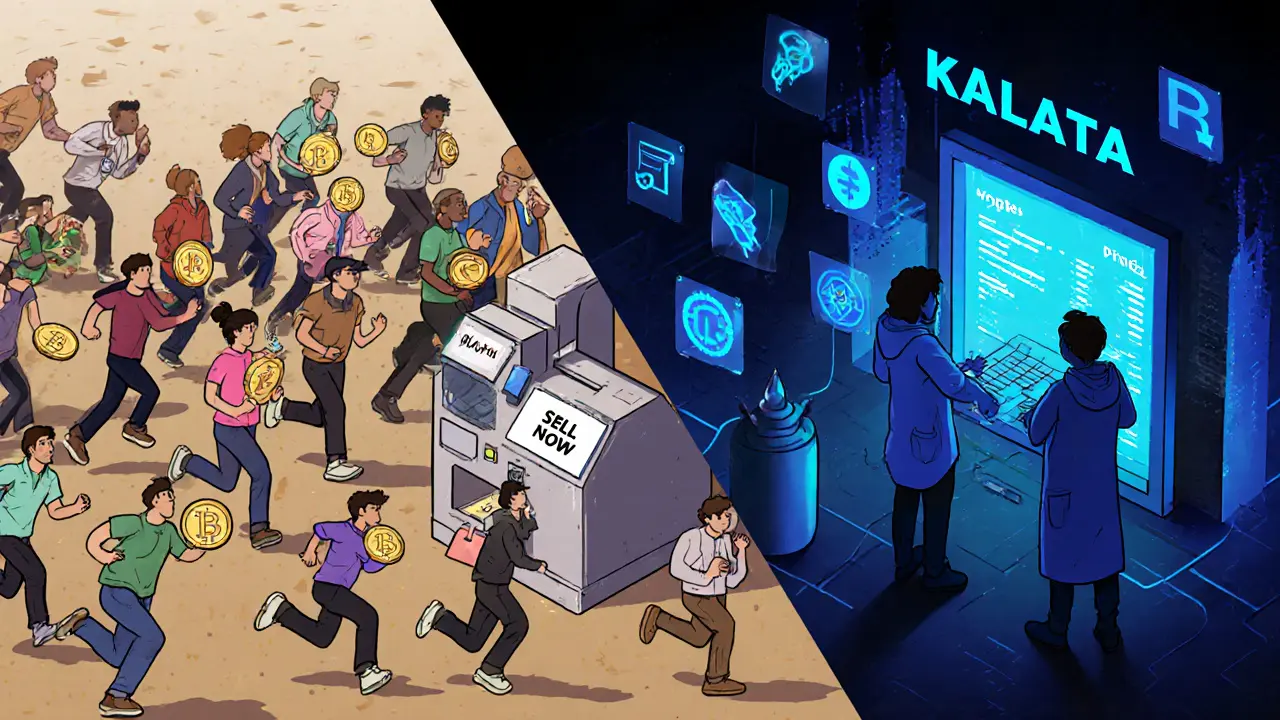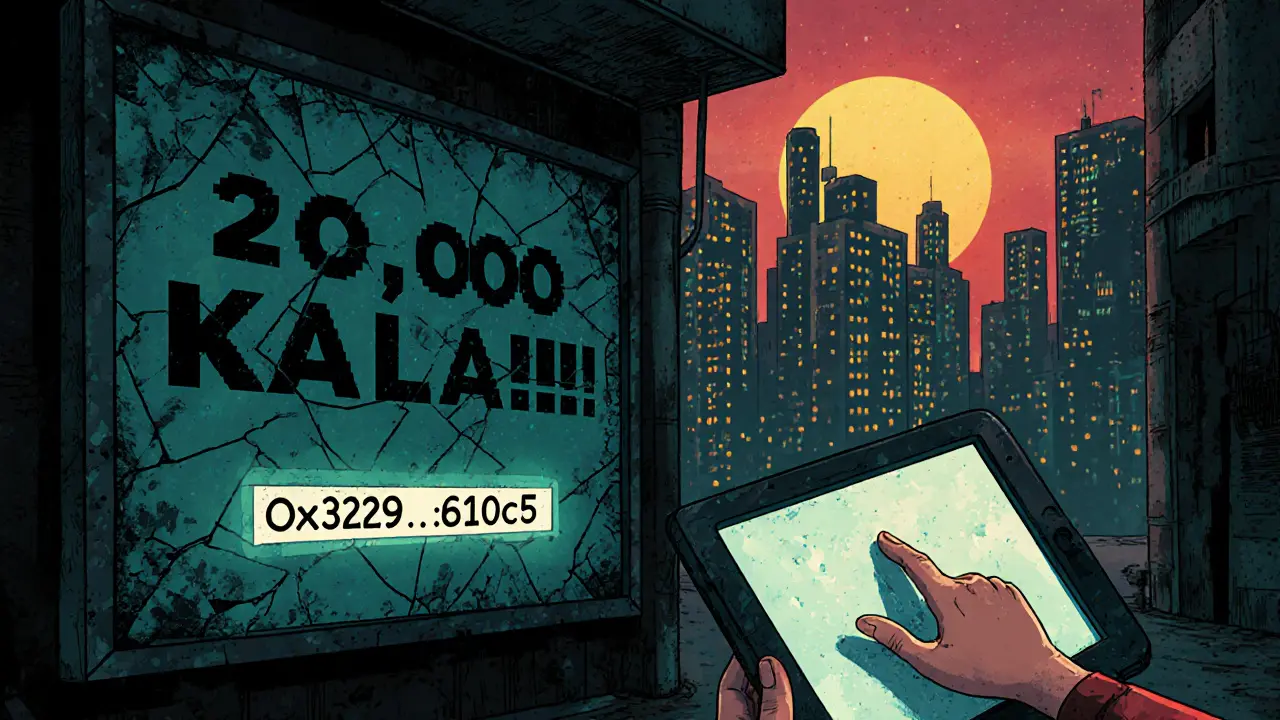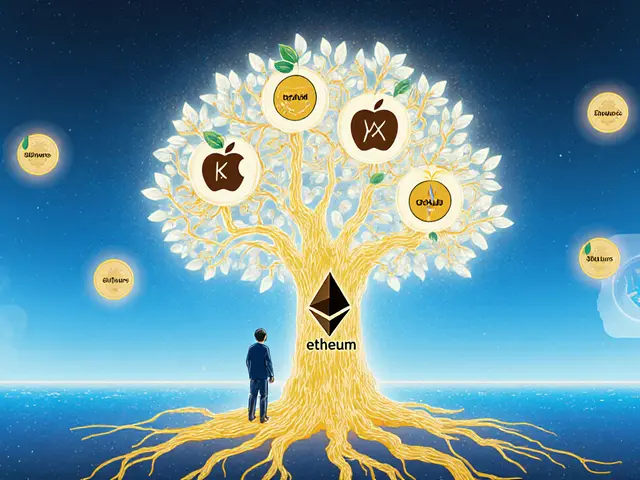KALATA (KALA) X CoinMarketCap Airdrop: What Actually Happened and Why It Matters

KALA Token Value Calculator
Calculate the current value of your 20,000 KALA tokens from the CoinMarketCap airdrop and see how it compares to what it was worth in 2021. This tool helps you understand the real value beyond just the token amount.
Your Token Value
With 20,000 KALA tokens at current price:
That's $180 at the current price of $0.009 (as of late 2025)
When you received these tokens in 2021:
$100-$200 (depending on price swings)
This means you would have gained since the airdrop
The current token price is $0.009, and the total supply is 200 million with 35 million currently circulating.
Back in 2021, if you were active in crypto forums or followed CoinMarketCap’s announcements, you might’ve seen a simple post: "Follow, verify, get 20,000 KALA tokens." It looked like free money. But here’s the truth: that airdrop was never about the tokens. It was about building a community for a project trying to do something no one else had pulled off yet - trading real-world assets like Apple stock or gold on blockchain, without a middleman.
What Was the KALATA X CMC Airdrop?
The KALATA X CoinMarketCap airdrop was a one-time event where 20,000 KALA tokens were given to each participant who completed a few basic steps. That’s not a typo. Twenty thousand. At the time, that could’ve been worth $100-$200 depending on price swings. But the real value wasn’t in the cash you could’ve cashed out. It was in access. KALATA Protocol wasn’t another meme coin. It was trying to build a decentralized finance (DeFi) engine that could trade stocks, commodities, and derivatives - all as synthetic tokens on-chain. Think of it like a crypto version of eToro or Robinhood, but without any company holding your money. Instead, users locked collateral and traded synthetic versions of real assets using decentralized price feeds. That’s complex. And complex projects need users. That’s why they partnered with CoinMarketCap. CoinMarketCap, back then, was still the go-to hub for crypto data. Millions of people checked prices there daily. By running an airdrop on their platform, Kalata didn’t just get eyeballs - they got verified users. People who already had wallets, knew how to interact with tokens, and weren’t just chasing hype.How the Airdrop Actually Worked
We don’t have the full rulebook anymore. The campaign page is gone. The YouTube promo videos are buried. But from archived forum posts and old tweets, here’s what participants needed to do:- Have a verified CoinMarketCap account
- Connect a crypto wallet (MetaMask was recommended)
- Follow KALATA’s official Twitter and Telegram channels
- Complete a short form confirming they understood the risks
0x3229...a610c5. Anyone could check the transaction history on Etherscan.
It wasn’t flashy. No fancy NFTs. No gamified quests. Just clean, simple mechanics - which was intentional. Kalata didn’t want gamblers. They wanted builders. People who’d stick around to trade synthetic assets once the platform launched.
Why KALA Tokens Were Special
KALA isn’t just a utility token. It’s the fuel for the entire KALATA Protocol system. Holders could:- Vote on protocol upgrades
- Receive a share of trading fees
- Stake to earn additional tokens
- Access early launch features on the KALATA platform

What Happened After the Airdrop?
The platform launched six months later. The trading engine went live. Synthetic Apple shares? Available. Synthetic gold? Available. Synthetic oil futures? Available. But adoption was slow. Why? Because the tech was ahead of the market. Most users didn’t understand synthetic assets. They didn’t get how collateral liquidation worked. They didn’t trust price oracles. And when the 2022 bear market hit, even the most dedicated users pulled back. The airdrop recipients? Many sold their tokens immediately. Others held. A small group - maybe 5% - started using the platform. They became early testers. They reported bugs. They suggested features. Some even built tutorials on YouTube. That’s the real win for Kalata: not the number of airdrop claims, but the quality of the community that stuck around.Why This Airdrop Still Matters Today
You might think this is ancient history. But look at what happened next. CoinMarketCap launched CMC Launchpad in 2023 - a curated platform for early-stage crypto projects to run token distributions, leverage trading, and community building. The KALATA airdrop? That was the prototype. The test run. The proof of concept. Today, CMC Launchpad runs dozens of campaigns. Projects like Arbitrum, Injective, and Sei used similar models. But none of them would’ve worked without the early lessons from KALATA’s campaign. Also, KALATA Protocol still exists. The token still trades. The smart contract is live. And the 165 million unissued KALA tokens? They’re still there. Waiting. Maybe for another airdrop. Maybe for a partnership. Maybe for when synthetic assets finally go mainstream.
Could You Still Get KALA Tokens Today?
No. The CoinMarketCap airdrop is long closed. The campaign page is archived. The distribution contract has been deactivated. But you can still buy KALA on decentralized exchanges like Uniswap or PancakeSwap. The price is low - under $0.01 as of late 2025. Is it worth it? That depends. If you believe synthetic asset trading will explode in the next five years - especially with AI-driven price feeds and institutional interest rising - then holding a small amount of KALA could be a long-term bet. If you’re just looking for quick gains? Probably not. The liquidity is thin. The volume is low. It’s not a trading coin. It’s a holding coin.What You Can Learn From This Airdrop
Most people look at airdrops and think: Free money. But the smart ones look deeper. Here’s what the KALATA X CMC airdrop teaches you:- Not all airdrops are equal. Some are marketing stunts. Others are ecosystem seeds.
- Projects with real tech - not just whitepapers - use airdrops to find early adopters, not speculators.
- Token supply matters. A project that holds back 80% of its tokens is thinking long-term.
- Partnerships with data platforms (like CoinMarketCap) are more powerful than influencer shoutouts.
- Community retention > airdrop size. 100 active users are worth more than 10,000 who cash out.
- Clear, technical use cases
- Transparent tokenomics
- Partnerships with established platforms
- Low circulating supply relative to total supply
Is KALATA Still Active?
Yes. The KALATA Protocol team still posts updates on their Discord and Twitter. The smart contract is live. The website is up. There’s no major news lately, but the project hasn’t vanished. The silence isn’t death - it’s preparation. The synthetic asset market is waking up. With new regulatory clarity in places like the EU and Singapore, institutions are starting to look at on-chain derivatives again. If KALATA’s engine can handle institutional-grade liquidity and low slippage, it might get its second chance. And if it does? The early airdrop recipients - the ones who held - could be in a very different position than they were in 2021.Was the KALATA airdrop real or a scam?
The KALATA X CoinMarketCap airdrop was real. It was conducted through CoinMarketCap’s official platform, tokens were sent via a verifiable smart contract (0x3229...a610c5), and recipients could track their claims on Etherscan. No funds were required to participate, and there were no phishing links involved. It was a legitimate community-building effort by a legitimate DeFi project.
Can I still claim KALA tokens from the 2021 airdrop?
No. The airdrop campaign ended in early 2022. The distribution contract is no longer active, and CoinMarketCap has removed the campaign page. Any website or social media post claiming to offer "late claims" or "unclaimed KALA" is a scam. The only way to get KALA now is to buy it on decentralized exchanges like Uniswap or PancakeSwap.
How many KALA tokens were distributed in the airdrop?
Each eligible participant received 20,000 KALA tokens. The total number of recipients is not publicly confirmed, but estimates suggest between 5,000 and 10,000 users participated. That means between 100 million and 200 million KALA tokens were distributed - roughly 30% of the total circulating supply at the time.
What is the current circulating supply of KALA?
As of late 2025, the circulating supply of KALA is approximately 35 million tokens. The total maximum supply is capped at 200 million, meaning 165 million tokens remain unissued and are reserved for future ecosystem growth, team incentives, or upcoming distribution events.
Is KALATA Protocol still operational?
Yes. The KALATA Protocol smart contracts are still live on Ethereum and BSC. The team maintains a Discord server and Twitter account, and the project’s website remains active. While there hasn’t been major development news since 2023, the core infrastructure is still functional, and the project has not been abandoned.
Why did KALATA partner with CoinMarketCap?
At the time, CoinMarketCap was the most trusted source for crypto data, with over 20 million monthly users. Partnering with them gave KALATA direct access to a highly engaged audience of crypto-savvy users - people who already used wallets, understood tokenomics, and were less likely to dump tokens immediately. It was a strategic move to attract serious users, not just speculators.
Could KALATA make a comeback?
Possibly. The synthetic asset market is gaining traction again, especially with institutional interest in blockchain-based derivatives. If KALATA can integrate with new price oracle systems, improve user experience, and secure partnerships with DeFi aggregators, it could see renewed interest. The fact that 82.5% of tokens are still unissued means they have room to incentivize new users without flooding the market.
